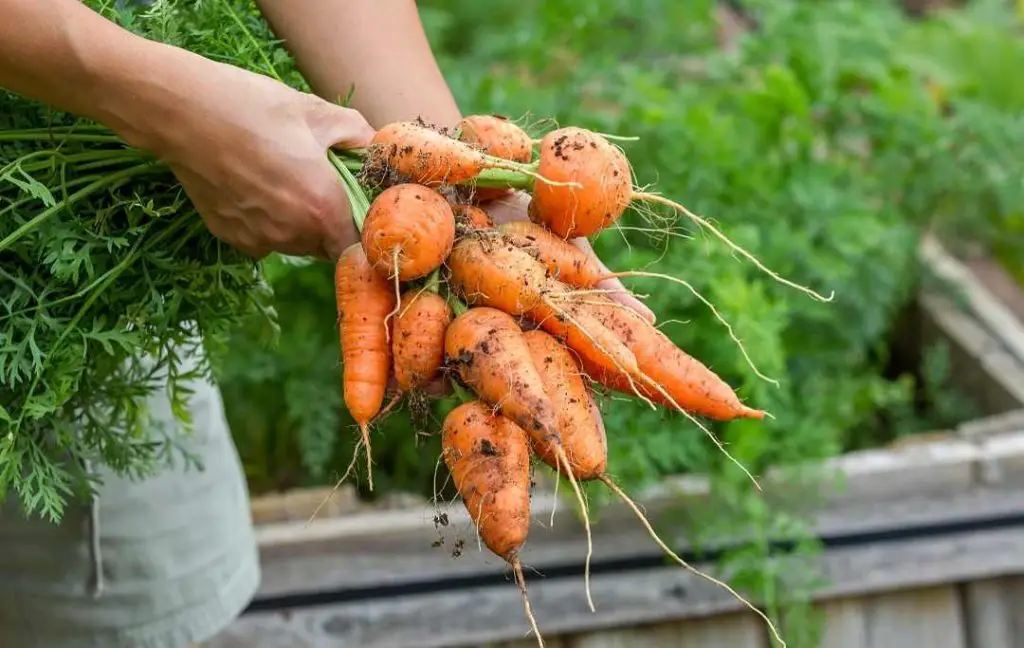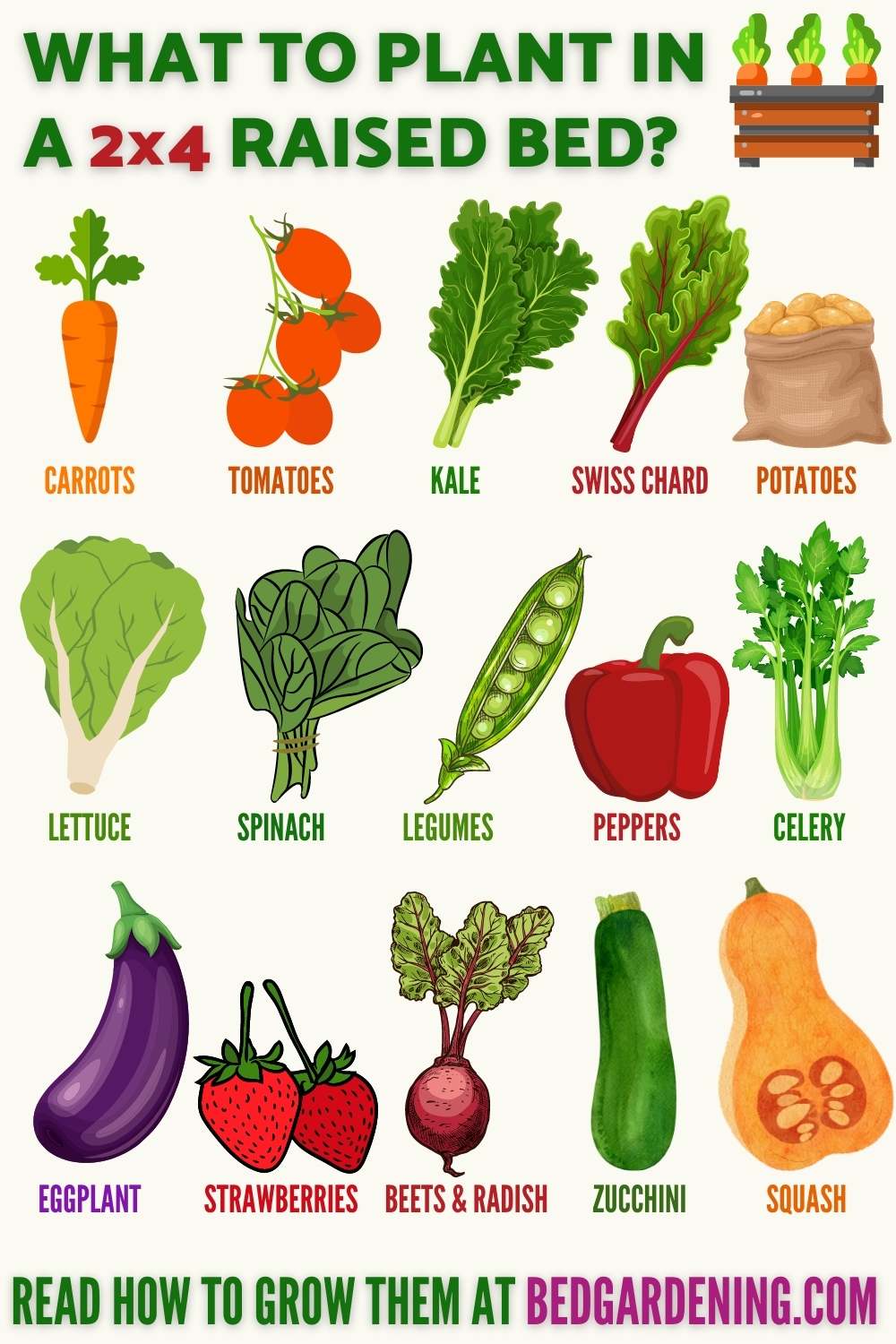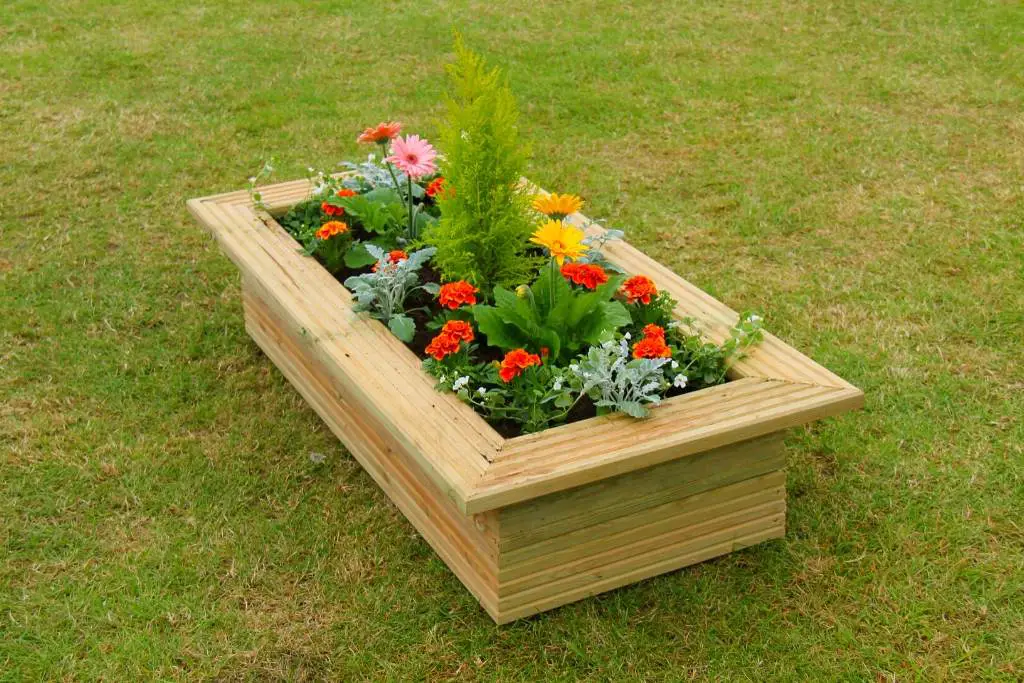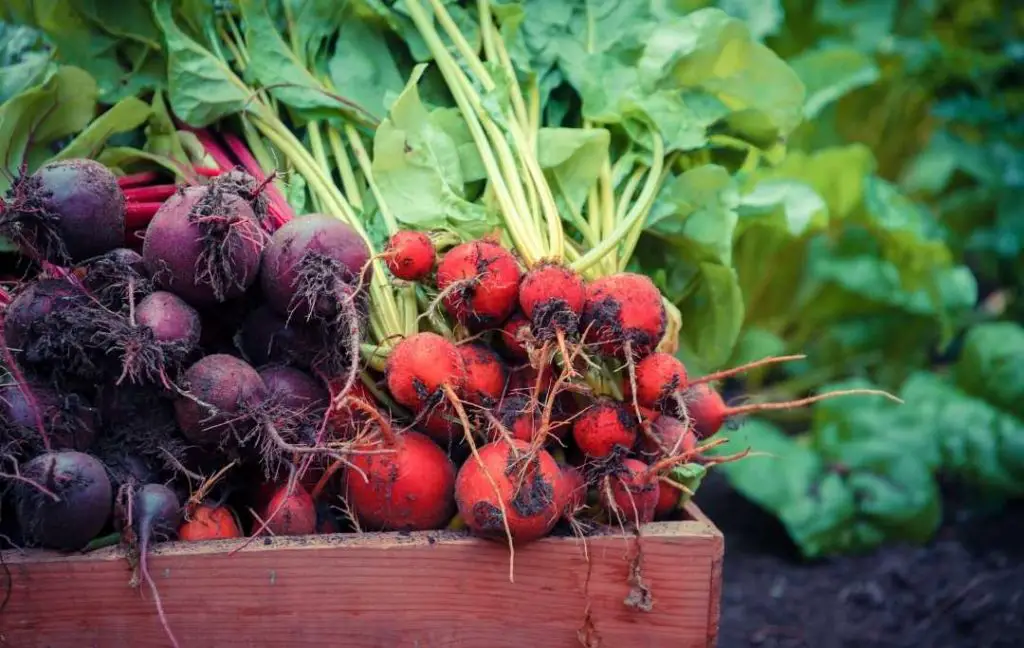You can grow anything in the raised bed because you can maintain the required conditions of any vegetable or fruit or ornamental plant according to its needs.
You can control the quality of the soil according to the requirement of your desired plants when you grow them in raised beds. Better soil makes it possible that you will get a higher yield of fruits and vegetables.

You can construct a raised bed according to the space you have in your garden or backyard. The raised bed can be built by using different materials such as wood, metal, stone, and brick. But the question is what to plant in a 2 × 4 raised bed.
The answer to this question is very exciting because you can grow anything in your raised garden bed. But the plants should require sunlight and water. Under the suitable temperature and humidity, your plants will thrive well in the raised beds
Best Fruits And Vegetables For Growing In A 2 × 4 Raised Bed

It’s up to you what type of vegetables, fruits, and herbs you like to grow in your raised bed. You must choose at least one vegetable that’s new to you. Following is a list of vegetables and fruits that can easily plant and thrive well in the raised bed.
1- CARROTS
Carrots are deep-rooted vegetables so your raised bed must be deep enough. This will help the roots of carrots to spread easily in the soil.
You should not use garden soil for filling your raised bed because garden soils are compact so the roots of carrots cannot thrive easily in the soil. You must use loose well-drained soil for this deep-rooted vegetable.
2- TOMATOES
Tomatoes are heavy feeders and like full sun to produce fruit. They need proper support so you have to add tomato cages in the soil of the raised bed.
You must maintain a frequency of water for keeping the soil moist. You should select a sunny spot for your tomato plants. In a raised bed, the soil warms very fast. So you can start your growing season early.
The depth of the raised bed must be 12 inches. Well-drained, light, acidic, and rich soil is perfect for filling your raised bed. Your 2 × 4 raised can be built from brick, metal, concrete, stone, and wood.
3- KALE AND SWISS CHARD
Both Kale and Swiss chard like to grow in cold climates. You can extend the growing season by covering your plants with cold frames. In this way, you will get a fresh supply of kale and swiss chard even in the fall and winter.
4- LETTUCE, SPINACH, AND MIXED GREENS
Warm soil is needed for growing lettuce, spinach, and mixed Greens in your raised bed. Make sure you are getting your raised bed with a high-quality soil mix.
When growing plants in raised beds means you can extend your growing season by planting earlier. With proper perfection, it is possible you can get healthy vegetables even in the winter.
5- LEGUMES
Lentils, chickpeas, peas, and beans can fix nitrogen back into the soil. By producing plentiful harvests they boost the nutrients in the soil. Climbing or freestanding both are best for raised beds.
6- PEPPERS AND EGGPLANT
Peppers and eggplants also grow well in your raised bed because of the warm soil. Both vegetables thrive well in the warm soil as you know the soil of the raised bed warms earlier in the season so you can start planting earlier.
Keep in mind that peppers and eggplants are heavy feeders so they need all the required nutrients. Fertilize and water them regularly to make the soil richer.
7- BRASSICAS
Cauliflower, Arugula, Kale, Brussels sprouts, Cabbage, and Broccoli are included in brassicas. Warm soil is needed for growing brassicas so a raised bed is a good option for them to extend your season.
Your soil must be rich in all essential nutrients especially nitrogen because brassicas are heavy feeders. You should not plant them close because in that case, they have to compete for nutrients. Balanced granular fertilizer and blood meal can be added to the soil throughout the season.
8- BEETS AND RADISHES
Both are root vegetables so they need loose soil. Weeds and rocky soil are not suitable for these vegetables. That’s why raised beds are a good option for them.
If your garden has rocky soil then root vegetables can’t grow perfectly. Weeds are unwanted plants that can steal nutrients from the soil so you should be careful.
9- CUCUMBERS
As you can control the soil content in a raised bed, cucumbers do exceptionally well. The required depth of the raised bed should be 18 inches or 45 cm.
Choose a sunny location for your raised bed and set up trellises for proper support. After planting the seeds you should water regularly. Cucumber plants need 1 to 2 inches of water weekly.
10- POTATOES
Soil is the medium for providing all the essential nutrients to your plants. You can fill your raised bed with a high-quality soil so your plants thrive well in the soil.
You can maintain your potato plants very easily. The location of your raised bed must be sunny. 6 to 8 hours of sunlight with well-drained soil is essential.
You will get a higher yield of potatoes if you grow them in the raised bed. For planting potatoes, you should make a six inches deep trench in the soil.
Place the seed potatoes in the trench. The potato eye should be facing up. Now cover the trench with the soil. After a few weeks, you will see potato plants sprouting.
11- CELERY
It is a cool weather crop and doesn’t need more space. Use soil that is rich in organic matter. For amending the soil of your raised bed, you can add compost, and worm casting.
You can prepare the young seedlings indoors and transplant them in a raised bed. 10 to 12 inches of space should be left between each plant of celery.
12- MELONS
You must choose a small watermelon variety like Sugar Baby for growing in your raised bed. For juicy watermelons, you must choose a sunny location for your raised bed.
You have a sturdy trellis for proper support before planting. After the germination process of seeds, you should water 2 inches per week. When your plant starts producing watermelons then you can reduce the amount of water to 1 inch per week.
As the vines of melon grow you should train them on the trellis. Watermelons are very heavy if you do not provide proper support then they will break off the vine.
13- SQUASH
You have to install a proper support system for this vegetable because it can sprawl and crawl. A vining variety needs less space so you should use it for your 2 × 4 raised bed.
Squash plants in a sunny location with well-drained soil tend to yield the healthiest plants with the greatest abundance of high-quality fruit.
14- STRAWBERRIES
Strawberries are among the easiest fruits to grow in ground, containers, pots, and raised beds. Loamy, well-drained, and rich soil is needed for filling your raised bed for growing juicy treats.
Your raised bed must be in a sunny location. Don’t select a shady area for your raised bed because strawberry plants need 6 to 8 hours of direct sunlight.
15- ZUCCHINI
If you are facing the problem of limited space then raised beds are the perfect solution. You don’t need a very deep raised bed for growing zucchini.
When you grow vegetables in your own raised bed then you will get a fresh supply of fresh veggies for your kitchen. You can’t transplant zucchini so you have to sow the seeds directly to their permanent location.
You should follow all the instructions about planting the seeds of zucchini. You can grow cosmos, zinnias, or calendula as companion flowering plants to attract pollinators. Zucchini vines need proper support so you have to install a sturdy trellis in your 2 × 4 raised bed.
Flowers And Herbs In 2×4 Raised Bed

You can grow everything in a raised bed but you should be careful about the heights of plants you choose for growing in a raised bed. For instance, you should not plant sunflowers beside a bachelor’s button.
The reason is that due to the height of the sunflower the bachelor’s button would not get enough light to thrive.
The best option for growing raised beds are snapdragons, zinnias, marigolds, and cosmos. If you are sowing the seeds of different flowers then you will get all the tips and instructions on the packet of seeds.
You should not ignore these instructions because you will get all the information about spacing and make a simple plan for growing different flowers in your raised beds.
You can grow different herbs in your raised bed. Raised beds make it possible for growing more plants in a small space. Most herbs thrive well in raised beds because of their shallow root system.
The herbs that have shallow roots are mint, sage, lemongrass, oregano, rosemary, basil, chives, lavender, and more. As many herbs are small to medium size so there is no need for deep raised beds. Following are some tips for planting Herbs in your 2×4 raised beds.
- You should plant taller herbs in the back and trailing herbs must be planted in the front of your raised bed.
- Never fill your raised bed with garden soil because it is very heavy and compact. A soil mix is a good option for growing herbs.
- You should do some research about the size of herbs before planting. It will be helpful for you to plan the arrangement of herbs in your raised bed.
- You should be careful before selecting the herbs for growing in your raised bed because some herbs cannot be grown together.
Companion Planting For 2×4 Raised Bed

You can pair the plants together to boost the growth and production of fruits and vegetables. It will also help to enhance the flavor of fruits and veggies.
Some plants need partial shade for their development and tall plants present in the raised bed provides shade and protection. Following are there some pairing suggestions for you.
When you are thinking about what to plant in the raised bed then these tips will be very helpful for companion planting.
- You should plant fruits near lavender to attract pollinators such as birds and bees.
- If basil is planted with tomato plants then it will help to repel mosquitoes and flies. The other benefit of basil is that it will help to improve the flavor of tomatoes.
- The aroma of thyme prevents strawberry plants from parasitic worms.
- Never grow cucumbers near sage.
- Chives and carrots are good neighbors. So you can choose to grow them in your raised bed.
- Mint prevents your plants from cabbage moths and flea beetles.
- Cosmos attract many beneficial insects that feed on those insects that eat your favorite vegetables and fruits.
- Marigolds, sunflowers, nasturtiums, and zinnias are very helpful at repelling harmful insects.
